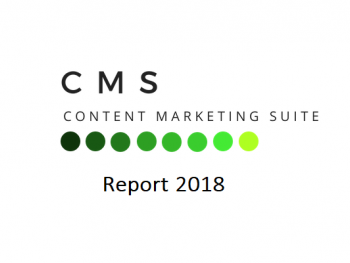Food Video Recipes: how to Present it
Food Video Recipes : How to create it with a low budget?
In the last few years we saw a staggering rise of business videos on social media. ‘Branded’ videos have more than 8 billion views a day on Facebook and more than 400 hours of video contents are posted every minute on Youtube, and the same on Twitter. Here, Visuals are six times more likely to be reposted than a picture. These incredible figures become even more interesting if we apply them to the food sector. In 2018, food video contents and the more popular "How to" videos were among the most engaging and compelling materials posted on web. Facebook, Youtube and Instagram, the temple of visual marketing, are filled with videos of recipes.
A case study stands out among the others to dispel any doubts. Since May 2016, Buzzfeed, the super-popular American media content website, has seen an increase of audience’s interaction and engagement that outdid any other US media outlets. This is due to the viral food video contents that were launched on Facebook to be seen by more than 360 million users every month. The statistics are incredible given the short span of time in which these results have been achieved. Imagine getting that successful. A business presentation in the food industry becomes an ideal vehicle to sum up and enhance your contents. If you manage to grab the viewer’s attention and make them curious they will go and read the recipe on a blog, platform or website.
Videos Everywhere!
Andrew Gauthier, executive producer at BuzzFeed Motion Pictures, explains that the key to the success is the deep human connections that food is able to establish. Recipes have always been a symbol of love and sharing with friends and family. There is no better place to share recipes than social networks, platforms that build their success on viral contents. A video that is less than a minute long stimulates eyes and mind and reaches that target of people that have little time to spare or are too lazy to read an article through the end. A video format is suitable to those who are craving fast-paced communication over the time of a break; those who travel and watch videos on their ride to work; and those who seek to combine the allure of written words with beautifully-constructed shots.
The food industry too is responding to the current rise of content marketing. This is especially true if you think that before bringing people to your website you need first to gain visibility. A video recipe is one the easiest channel to reach people. A video posted on social media engages audiences and gives your brand prestige and recognizability. Just think about all of those companies, food bloggers, and foodies that since 2015 have contributed to the increase of video contents posted on Facebook. To add a spin to a recipe by using a video is pretty easy. We encourage you to take a look at the video we made with our platform, CMS Video. Watch it carefully.
How to Present your Recipe
The video runs for an average of 50 seconds. Each slide is 4 seconds long: this is the perfect length that has been measured against the average attention time of a viewer on a mobile device. Our presentation responds to the golden rule that says that a viral video on social media does not have to run longer than 1 minute. As we have already pointed out, the short format is perfect to those who want to consume contents as quick as possible. Each image is accompanied by a clear and short caption, a ‘how to’ presentation that works and is intermediately legible. The concept is turned into a video that will lead back to a deeper understanding of the text.
Your video will aim to encourage viewers to click on your website. The first step of your video recipe is to establish the goal and target of your audience. Transitions must be simple and rapid. If you are planning on sharing your contents on Facebook or Instagram, speed is key to success, since you don’t want people to scroll down. On Youtube instead, especially in the case of a tutorial, the viewers is likely to stay focused a little bit longer so you can slow down the rhythm! Before you start playing with pans and pots, plan your storyboard by linking each image with a short yet compelling text.
The first 3 seconds are crucial: in this short amount of time you get the chance to grab the complete attention of the viewer. A good idea could be to present the cooked dish to create curiosity and draw viewers in. Following that, you need to decide whether to show your ingredients and how to proceed to make the dish or limit yourself to a little hint linked back to your website. Call To Actions are still very powerful tools to add at the end of the videos. Last but not least: the recipe. Choose preparations that are simple and winsome. Focus on few ingredients and few steps. This is a winning combination to win over both cooking professionals and beginners who might get scared before complex recipes.
After Christmas, videos in the food sector become highly relevant to those who are looking for ideas on how to reuse their leftovers. They are not disruptive or too challenging and grab your attention by using a universal and immediately comprehensible language.


.jpeg)


